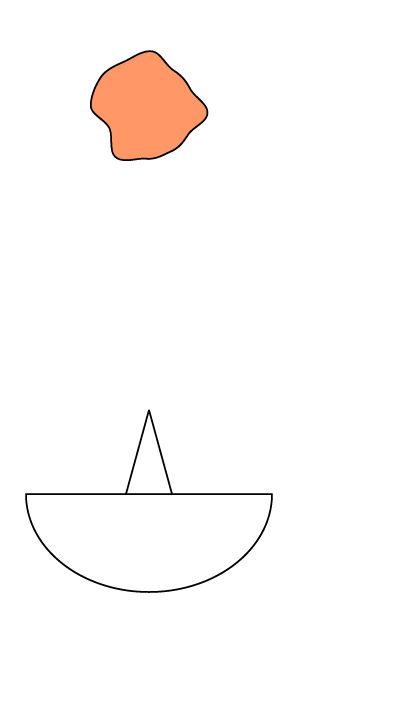Emily Lakdawalla • Oct 29, 2010
Arecibo images show Hartley 2 is elongated
Comet Hartley 2, the target for Deep Impact's close flyby (now just six days away!) made its closest approach to Earth on October 20, at a distance of 17.7 million kilometers. Astronomers at the great Arecibo radio telescope are taking advantage of its proximity to perform radar imaging of the comet's nucleus in an imaging campaign that began on October 24 and continues through today. This morning they releaseda set of twelve images of the nucleus, the tiny chunk of ice and dirt hidden within the coma, which turns out to have a very elongated shape. Without any way of knowing anything about its shape before these radar images, the Deep Impact team has been using the figure of 1.2 kilometers for Hartley 2's diameter, but it turns out to be longer and skinnier than that. The release cites its length as 2.2 kilometers.

Here's a link to even more of the images plus more detail on the science (thanks to Peter Masek). By the way, if you're wondering how a radio telescope captures an image of an asteroid that can't be seen from Earth, you ought to read my blog post about how radio telescopes get "images" of asteroids, which features such fine animations as this one.
That elongated, double-lobed shape reminds me of comet 19P/Borrelly:

What will Hartley 2 look like up close? We'll know in a week! The other question some of you may be asking is whether the fact that it is longer than anybody knew should affect Deep Impact's imaging plans for the encounter. The release acknowledges this concern but only says "Mission engineers and scientists are discussing the new findings and what -- if anything -- they signify for the upcoming comet encounter."
Humor me for a bit of thinking out loud about what effect this elongated shape could have on Deep Impact's imaging. The flyby is going to be at great enough distance that, at 1.2 kilometers diameter, the nucleus would only have been 170 pixels across to the medium-resolution imager. It may actually turn out to be (let's see, 2.2 divided by 1.2 times 170) 312 pixels long but much skinnier, which is still a lot smaller than the size of the camera's detector (1024 pixels square). However, one way that Deep Impact's mission team plans to squeeze a lot of images onto the spacecraft's limited flash memory is by subframing the images -- that is, they only save on disk a piece of the image cropped out of the original. I know that one common setting they use is to take the center 256 pixels. This reduces the space taken up on disk by each image by a factor of 16, which means they can take images 16 times as frequently as they would if they had to save the entire photo. If -- and this is totally just me thinking out loud -- if they selected that 256-pixel subframe option for closest approach in order to maximize image frequency, a 1.2-kilometer nucleus would (provided Deep Impact's pointing was good) stay comfortably within that subframe, but if the comet is actually 2.2 kilometers long and its long axis just happens to be perpendicular to the spacecraft's line of sight, and the entire length of the asteroid from tip to tip happens to be sunlit, the closest approach images could clip its ends, cutting off (in the very worst case) about 60 pixels worth of comet. But this wouldn't affect images taken just seconds before or after closest approach, so it's really not that big a deal. Of course it's even possible they selected 128-pixel subframes for their closest-approach images -- I'm not sure what the plans are.
Personally I doubt the team will be willing to make any changes to their sequences at this late date; and, hopefully, simulations will show any changes not to be necessary or desirable. It's great that we even know anything about the shape of this tiny object before a spacecraft is scheduled to visit it up close, thanks to Arecibo.

Support our core enterprises
Your support powers our mission to explore worlds, find life, and defend Earth. You make all the difference when you make a gift. Give today!
Donate

 Explore Worlds
Explore Worlds Find Life
Find Life Defend Earth
Defend Earth


